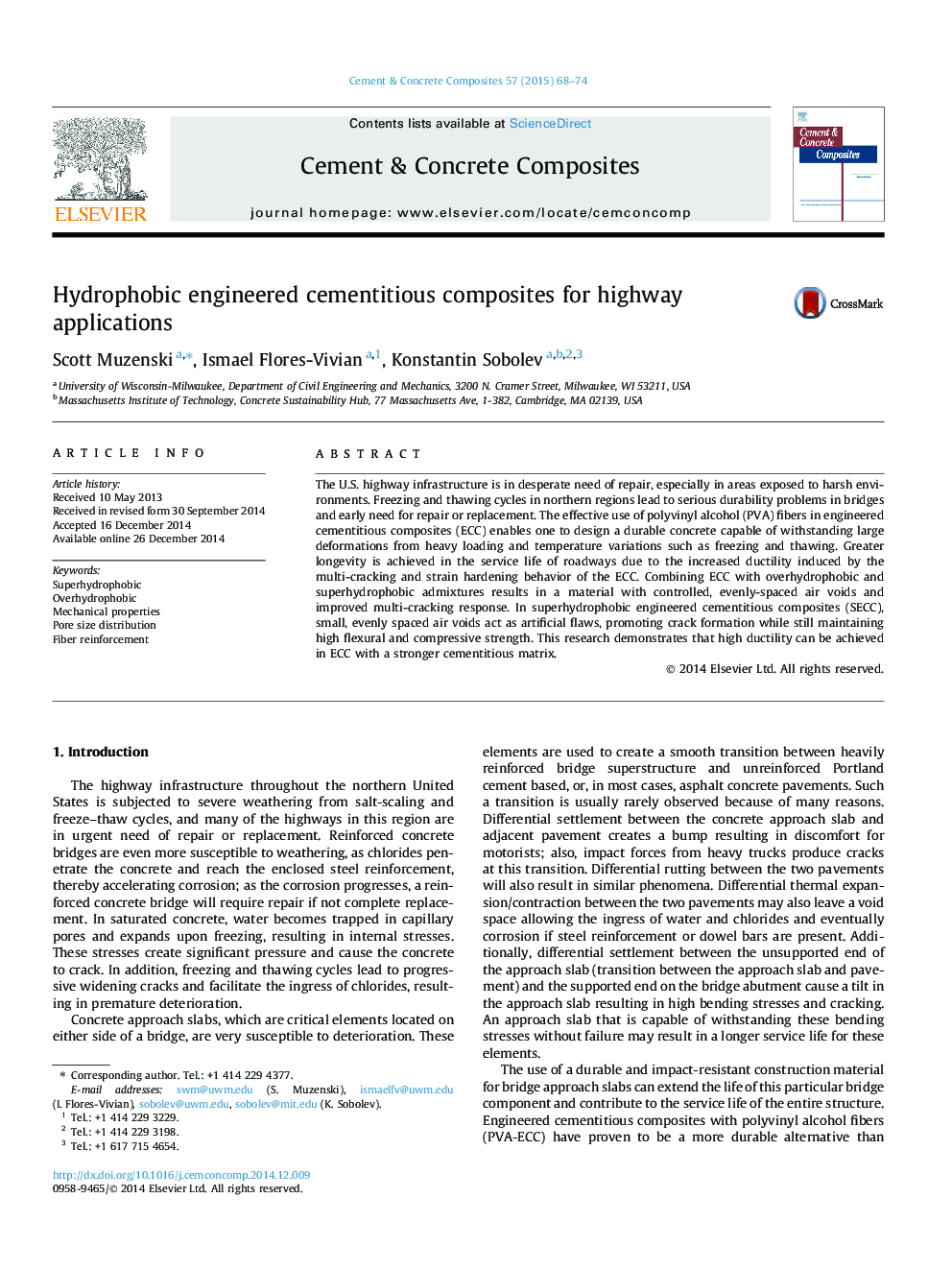| Article ID | Journal | Published Year | Pages | File Type |
|---|---|---|---|---|
| 1454629 | Cement and Concrete Composites | 2015 | 7 Pages |
The U.S. highway infrastructure is in desperate need of repair, especially in areas exposed to harsh environments. Freezing and thawing cycles in northern regions lead to serious durability problems in bridges and early need for repair or replacement. The effective use of polyvinyl alcohol (PVA) fibers in engineered cementitious composites (ECC) enables one to design a durable concrete capable of withstanding large deformations from heavy loading and temperature variations such as freezing and thawing. Greater longevity is achieved in the service life of roadways due to the increased ductility induced by the multi-cracking and strain hardening behavior of the ECC. Combining ECC with overhydrophobic and superhydrophobic admixtures results in a material with controlled, evenly-spaced air voids and improved multi-cracking response. In superhydrophobic engineered cementitious composites (SECC), small, evenly spaced air voids act as artificial flaws, promoting crack formation while still maintaining high flexural and compressive strength. This research demonstrates that high ductility can be achieved in ECC with a stronger cementitious matrix.
